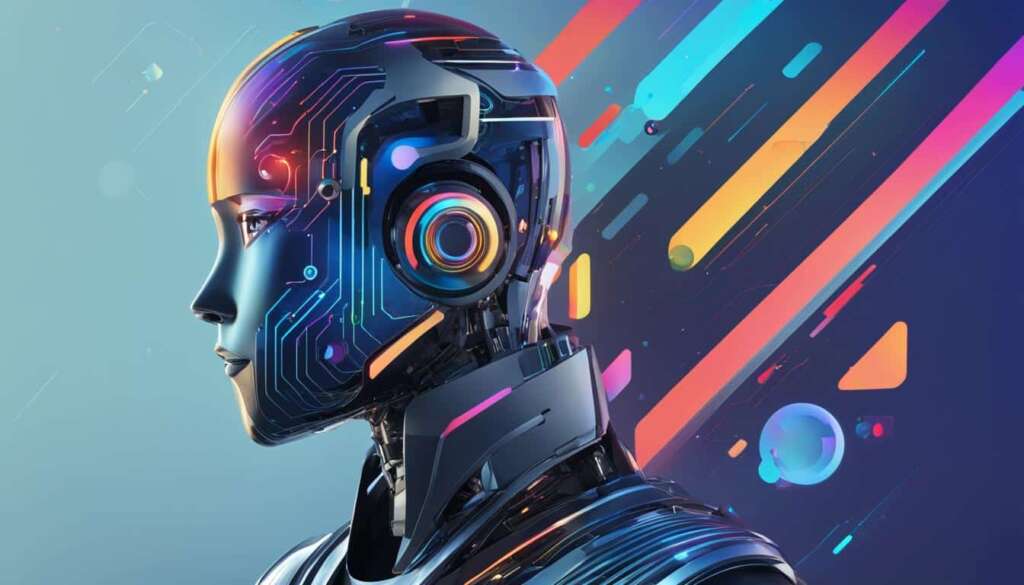Table of Contents
In the rapidly evolving landscape of artificial intelligence and natural language processing, chatbot technology has made significant strides. One prominent example is GPT, which stands for Generative Pre-trained Transformer. Developed by OpenAI, GPT forms the backbone of various applications such as ChatGPT – an AI chatbot that utilizes GPT’s generative AI capabilities to engage in human-like conversational dialogue.
ChatGPT harnesses the power of language models to process user prompts and generate responses that simulate human conversation. This innovative technology has been trained with reinforcement learning, enabling it to perform a wide range of tasks, including writing articles, composing social media posts, and even answering questions with unprecedented accuracy.
Embracing the transformative potential of GPT in chatbot technology opens up new horizons for businesses and individuals. By understanding the inner workings of ChatGPT, we can unlock its true potential and explore its versatile applications across different domains.
What is ChatGPT and how does it work?
ChatGPT is an advanced AI chatbot built on neural networks and deep learning models, specifically the popular GPT-3, GPT-3.5, and GPT-4 models. These neural networks power ChatGPT’s ability to process and predict text based on patterns in the training data. By employing deep learning techniques, ChatGPT can generate human-like responses to user prompts.
But how does ChatGPT learn to be so conversational? This is where reinforcement learning comes into play. Through a process of human feedback and reward models, ChatGPT improves its responses over time. Human feedback helps to fine-tune the chatbot’s output, training it to provide more accurate and contextually appropriate responses. Reinforcement learning enables ChatGPT to learn from its mistakes and optimize its performance.
The transformer architecture, which underlies the functioning of ChatGPT, further enhances its capabilities. Transformers allow the chatbot to analyze and comprehend the input it receives, capturing the nuances and context to generate meaningful and coherent responses. This transformer-based approach has revolutionized the field of natural language processing and has greatly contributed to ChatGPT’s ability to simulate human-like conversations.
“ChatGPT’s training with neural networks and reinforcement learning enables it to deliver human-like responses, while the transformer architecture enhances its understanding of user input.”
By combining neural networks, deep learning, and transformer architecture, ChatGPT has become a powerful tool for various applications. It can assist in content creation, offer customer service support, aid in code generation, and even provide guidance in STEM disciplines. The versatility and intelligence of ChatGPT make it an invaluable asset for individuals and businesses seeking efficient and effective conversational AI solutions.
Continue reading to explore the diverse applications of ChatGPT and the benefits it brings to different industries.
Comparing ChatGPT with Traditional Chatbots
| Features | ChatGPT | Traditional Chatbots |
|---|---|---|
| Language Generation | Simulates natural human-like conversations | Relies on pre-defined responses |
| Flexibility | Can handle a variety of queries and topics | Limited to specific use cases |
| Learning and Adaptability | Improves over time with reinforcement learning | Static responses, no learning capability |
| Understanding Complex Queries | Uses transformer architecture to capture context | Struggles with nuanced queries or long-prompt interactions |
| Human-like Conversations | Provides conversational and contextually appropriate responses | Often generates generic or robotic replies |
How can ChatGPT be used?
ChatGPT is a versatile tool that can be utilized in various ways to enhance productivity and efficiency in different domains. Whether it’s generating code, creating content, providing customer service, assisting with STEM disciplines, or even aiding with job searches, ChatGPT offers valuable assistance in numerous fields.
One of the key applications of ChatGPT is code generation and bug fixing. It can help programmers by automatically generating code snippets, offering suggestions, and assisting in identifying and resolving coding errors.
Content creation is another area where ChatGPT shines. It can be a valuable tool for writers, marketers, and social media managers, helping in tasks such as drafting emails, composing social media posts, or generating catchy titles for articles. ChatGPT’s abilities extend beyond language generation, making it an asset in content-related endeavors.
Customer service is another domain where ChatGPT can make a difference. With its ability to understand and respond to natural language, ChatGPT can provide efficient and personalized customer support, answering inquiries, resolving issues, and enhancing the overall customer experience.
For those in STEM disciplines, ChatGPT can be a valuable assistant. It can help in solving math problems, generating formulas or diagrams, and providing explanations for complex concepts. Whether it’s for students, researchers, or professionals, ChatGPT’s capabilities in STEM can be a valuable resource.
Job searches can also benefit from the assistance of ChatGPT. It can help job seekers by providing suggestions for resume writing, offering interview tips, and even assisting in searching for relevant job opportunities. With ChatGPT’s language processing capabilities, it can help individuals navigate the job market more effectively.
Overall, ChatGPT’s capabilities extend to a wide range of applications, making it a valuable tool for individuals and businesses alike. Its ability to generate code, assist in content creation, provide customer service, support STEM disciplines, and aid with job searches showcases its versatility in various industries and professions.
Benefits and Limitations of ChatGPT
ChatGPT, with its advanced natural language understanding capabilities, offers several benefits that can significantly enhance efficiency and save costs. Firstly, it excels in handling routine tasks, automating processes that would otherwise require manual effort. This efficiency boost can free up valuable time and resources for other important business activities, resulting in improved productivity.
Moreover, ChatGPT’s ability to generate high-quality content contributes to improved content quality. It can assist in language correction, offering suggestions for more accurate and engaging writing. Additionally, it aids in idea generation, helping users overcome creative blocks and produce compelling content.
Another valuable application of ChatGPT is in education and training. Its availability 24/7 and instant response time make it a valuable tool for learners, providing prompt assistance and access to information. It can support students in various disciplines, including Science, Technology, Engineering, and Mathematics (STEM), by answering questions, solving problems, and assisting with research.
Despite its numerous benefits, ChatGPT does have limitations. Its understanding of human language is shallow, leading to potential machine-like and unnatural responses. Additionally, its knowledge is limited to information available up to 2021, which may not be up to date for certain topics. Detecting sarcasm, irony, and subtle nuances of communication can also pose challenges for ChatGPT, potentially affecting the accuracy of its responses.
Furthermore, ethical concerns arise in relation to bias in training data and potential plagiarism. ChatGPT learns from large datasets, and if those datasets exhibit biases, the chatbot may inadvertently replicate those biases in its responses. There are also security implications to consider, as the technology relies on data storage and potential access to sensitive information.
FAQ
What is ChatGPT?
ChatGPT is an AI chatbot developed by OpenAI that utilizes natural language processing to generate human-like conversational dialogue.
What does GPT stand for in ChatGPT?
GPT stands for “Generative Pre-trained Transformer,” which refers to the model’s ability to process user prompts and generate responses based on pre-training with large amounts of data.
How does ChatGPT work?
ChatGPT is powered by large language models, specifically GPT-3 and now GPT-3.5 and GPT-4. These models use neural networks and deep learning techniques to process and predict text based on patterns in the training data. ChatGPT is trained with reinforcement learning, which involves human feedback and reward models to improve its responses over time.
What can ChatGPT be used for?
ChatGPT can be used for various purposes, such as writing articles, composing social media posts, answering questions, generating code, bug fixing, composing music, drafting emails, summarizing articles or presentations, creating social media posts, generating titles for articles, solving math problems, assisting with job searches, and more. Its capabilities extend to a wide range of domains, making it a useful tool for individuals and businesses in different industries.
What are the benefits and limitations of ChatGPT?
ChatGPT offers several benefits, including increased efficiency in handling routine tasks, cost savings compared to hiring additional staff, improved content quality through language correction and idea generation, support for education and training purposes, instant response time, availability 24/7, multilingual support, personalization, scalability, and natural language understanding. However, it also has limitations, such as shallow understanding of human language, lack of knowledge beyond 2021, potential machine-like and unnatural responses, inability to detect sarcasm and irony, challenges in shifting focus, and ethical concerns related to bias in training data, plagiarism, and security implications.







